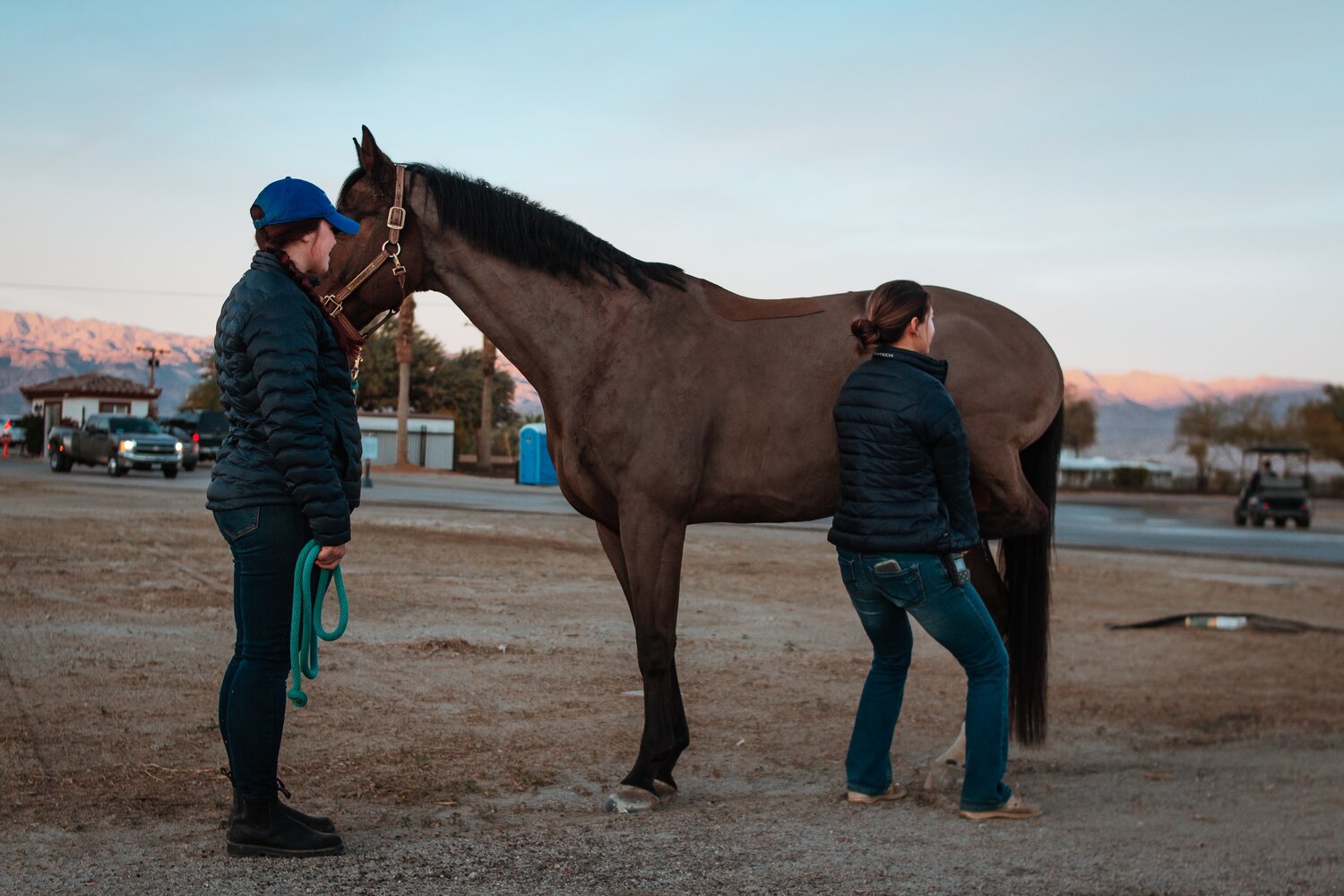As year-round competitions become commonplace in the sport horse industry, how can you team up with your vet to reach an optimal level of performance and increase equine athletic longevity?
For our first Informative Article on the topic, we have partnered up with our friend Dr. Lauren Taylor. Below she elaborates on the basics and benefits of evaluating equine athletes through musculoskeletal examinations.
Evaluating the Horse as an Athlete
Competing year-round is becoming increasingly popular in the sport horse world. This creates an obstacle for achieving coordinated veterinary care as athletes travel from event to event. With this increase in athletic travel, communication and teamwork between veterinarians, riders, and caretakers becomes crucial.
A musculoskeletal or lameness examination not only assists in evaluating soundness or decrease in performance, but can also provide a baseline to monitor for changes in soundness. There are three major components of the examination: history, static evaluation, and dynamic evaluation.
History
History collection is one of the most important parts of the examination because it leads the focus of the static and dynamic evaluations. As the caretaker of the horse you may be asked about changes in footing, environment, travel history, current medications, previous injuries and joint injections. This offers insight into the potential cause of the problem as well as confounding factors. Especially in cases of decreased performance, your veterinarian may ask when you noticed them acting abnormally --- are they landing on a certain lead after a fence or are they resisting a pirouette in only one direction? As a rider, is your body consistently shifted over to one side over the other? The answer to these questions can give us clues to understand why your horse is resistant to exercise and if it is related to pain, fatigue, or behavior.
Static Evaluation
Our goal during a static examination is to look for areas of soreness and notice asymmetrical differences in muscle, bone, and joints. For example, a sensitive back could be an indicator of poor saddle fit, compensation from a lame limb, or both.
A thorough physical examination can also reveal non-musculoskeletal issues that may be affecting your horse’s performance. By assessing the horse as a whole, we are able to take all contributing factors into consideration. Changes in muscle and sensitivity to palpation can help us localize the problem and we can use the dynamic evaluation to either confirm or deny our suspicions.
Dynamic Evaluation
During a dynamic evaluation, the horse is challenged in various conditions: in a straight line and on a circle, usually on both hard and soft surfaces, and through flexion tests. Flexion tests allow veterinarians to stress more specific regions of a limb and then assess changes in gait. A significant change in gait following a lower right front limb flexion test might narrow down our region of interest to the right front fetlock, pastern, and coffin area. In cases of subtle lameness, we are often attempting to establish if there is a “true” lameness or if it is a normal asymmetrical variation for that individual. To characterize the problem it is necessary to determine the relative importance of our exam findings. Observing the horse under saddle or during competition can often assist in these situations by making the problem more noticeable, especially if the complaint is only when the horse competes.
So as a horse owner, a rider, a trainer, or a groom, what can you do to help your horse maintain their optimal performance level? Know your horse and be attentive to changes in performance. Being able to recognize when there is a decrease or change will help your veterinarian detect problems early. Additionally, if a horse suddenly starts misbehaving, it may be an indication that there is a physical problem at play, not behavioral.
Human athletes often compete with some level of pain or dysfunction, and so do equine athletes. Most horses happily compete with some level of discomfort. Therefore, paying attention to how much we should push them is very important. The earlier we can identify lameness, the more career-limiting injuries we can prevent.
The nature of their work and the intensity can play an important role not only in bringing a horse back from an injury, but also prevention. We can create exercises that build muscles to support an injury or an area of weakness. If a horse has a conformational asymmetry that predisposes them to certain stressors or injuries, it is important to consider what performance level we expect them to obtain and how we can support them.
Overall, staying involved in your horse’s health will allow them to maintain peak athletic ability as well as performance longevity. Working with your veterinarian, you can create an individualized plan that works best for you and your horse.

